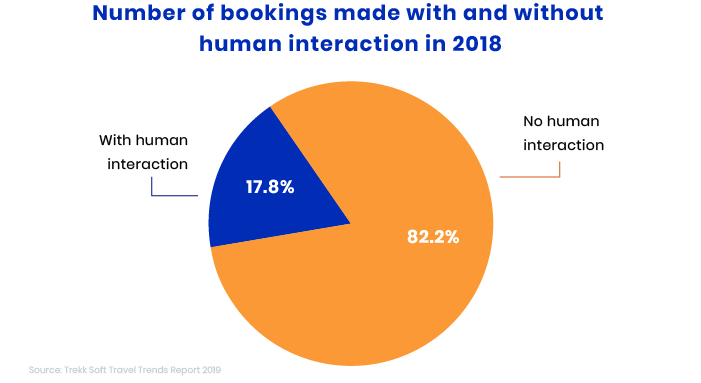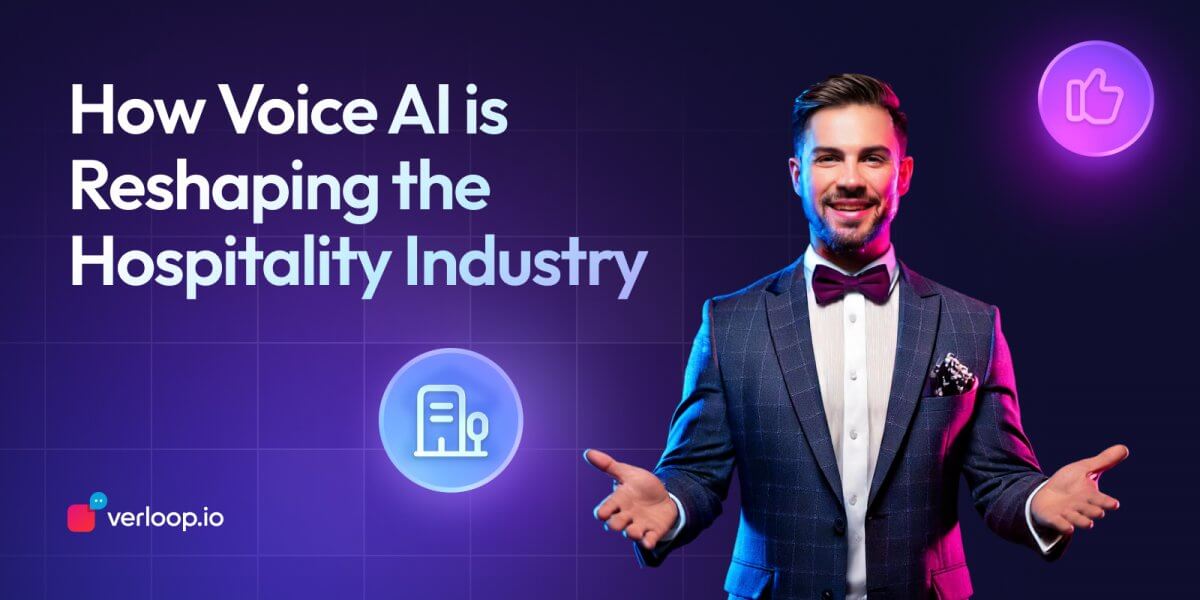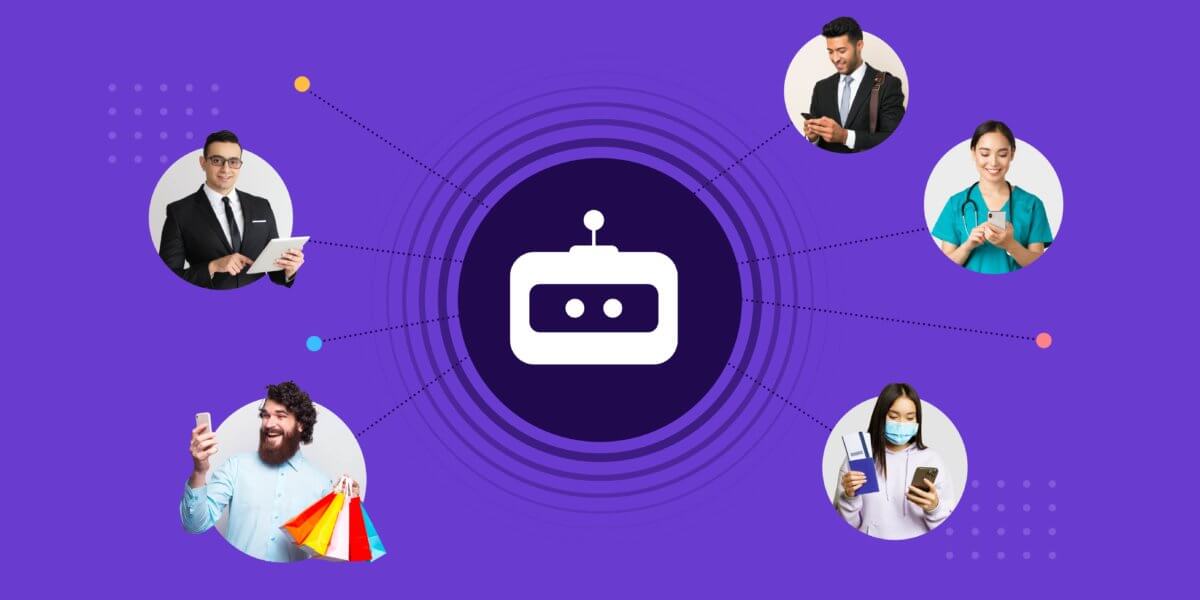7 Tips to Build a Travel Chatbot That Travelers Will Love

7 Tips to Build a Travel Chatbot That Travelers Will Love
Travel Chatbots Help Provide a Better and Interactive Experience for Travelers.
We have entered into a technological revolution, where companies are on a path to be technologically advanced and customers are more than willing to try new things and are completely digitally adept. Keeping that in mind, travel agencies have understood the need to implement a travel chatbot and provide users with an interactive travel experience.
The travel and tourism industry is one of the world’s largest industries with a global economic contribution of US $7.6 Trillion!

It’s an industry that is always booming and filled with avid travelers and plenty of places to visit.
And so, while picking a holiday destination, considering the millions of places to visit and budget or time constraints in some cases, we often spend enough time researching the next vacation stop. Thus, before any travel plan is made, these are the three most important questions that help plan the itinerary:
Where to go? How to go? What to do there?
But as mentioned before, being a digitally forward industry, travelers no longer have to visit the agencies to book a travel package or a flight ticket. With the power of the internet and now, travel chatbots, an individual can get the answers to the same pre-travel questions(see above) or more within a few minutes.
Companies like Expedia and Booking.com have deployed AI chatbots for websites to assist the visitors with their bookings, or even any queries during the travel journey.
With many companies inching towards deploying their own travel chatbot to assist the customers in a variety of ways, it becomes important to build a bot that the travelers will actually use or be fond of using.
Here Are the Tips to Build a Great Travel Chatbot
1.What’s Your Travel Chatbot’s Purpose?
Before you create your first bot, it’s important to know why you’re building a travel chatbot. You can figure that out by trying to understand what problem you’re trying to solve for the visitors or travelers.
Suggested Reading: The Need for a Travel Chatbot with top 7 Use Cases
Your bot can be used to assist with:
- Bookings and cancelations
- Choosing a travel destination
- The places to visit in a new location
- All queries around the booking
- Transportation options
The problem you’re trying to solve can also be a compilation of the above use cases. After the purpose is defined, dig deeper into your target market, what questions would they ask and what would their intention of using your bot be.
This step helps in building a proper flow for your bot where you can train it with the frequently asked questions, options to present to the visitor, etc.
Also, if your company provides holiday packages for a few selective regions, then this will also help you define your bot’s purpose, by understanding the geographies you’ll be targeting. And including the related questions/options within your travel bot.
2. What’s the Traveler’s Preference?
Before a booking is made, an individual considers a variety of factors. Such as, what destination to visit, the duration of the stay, budget, the purpose of the visit, etc.
Thus, a chatbot for a travel agency must entail all these questions while helping the customer make a booking. And so, more questions help in creating a customized journey for the customer with a personal touch.
Example: If your bot specializes in scheduling flights, then these are the layers of questions you can include:
1. Where would you like to travel?
2. Where would you be traveling from?
3. What date would you be traveling?
4. Any airline preference?
5. Any preferable time?
When the customer answers these questions, the end result will be much more personalized and be specific to the individual. Also, if most/all the questions are asked within the bot, then it removes the need to be redirected to another page.
Not to forget that the bot should not be too intrusive in asking certain details that the individual might not be that comfortable in sharing. For example, questions like where they live, the places they visited before, etc.
Thus, these questions can be included as options, giving the customers an option to reply selectively. And also, it’s important to build a strong privacy policy to avoid all of such concerns.
3. Add a Bit of Personality to Your Travel Chatbot
When we take the travel and tourism industry, we immediately think of entertainment, relaxation, calmness, etc. The same feeling should resonate with the travel bot whenever someone converses with it.
Thus, it’s important to figure the tone of your travel chatbot. Or mainly how you want the customer to feel when they talk to the bot. Do you want them to feel – Happy? Safe? Excited? Or anything else that you want to convey through your bot’s tone.
This also helps in defining the positioning of your bot and how you’d like the customers to perceive your bot or your company in the end.
Plus, remember to give a name and an image to your bot that humanizes it and helps the users think of your brand when they chat with it.
Using gifs, emojis, pictures throughout the flow also help in defining the bot personality.
Suggested Reading: Improve Customer Experience By Giving Your Chatbot A Personality
4. Proactively Ask Questions
It’s important to train your travel chatbot to be as predictive as possible. It’s on your bot to drive the entire conversation and ask the related questions to the customer first before they ask you.
This also allows the users to understand the added services that the company is currently providing.
Example:
Ms. T: Hey Bot, show me the flights available from Finland to Ireland for 22nd November 2020.
Bot: Sure, below are the available flights. Would you also like to book a meal?
Or it could also be that after the user has booked the flight, the bot can ask the customer if they’d like to check out the nearby hotel rooms.
Thus, this can be achieved by monitoring the customers. That is, checking what they usually book together, their common searches, their interests, etc. After analyzing the customers, you can train the bot to ask the follow-up questions accordingly.
You can also achieve this through machine learning and train the travel bot as per the user’s typical responses or requirements.
5. AI+ Human Chatbot for a Travel Agency
Chatbots are still learning and training to be the best.

Thus, when a bot gets stuck or fails to understand what the user is saying, the conversation must be transferred to a human agent immediately to avoid giving the users baseless answers.
Example: If any question is asked around the pricing of a custom-made travel package and since this query has too many factors to consider this can be passed on to an agent to handle.
Ideally, when the bot doesn’t understand how or what to answer it should simply say that it doesn’t know the answer and transfer the query to the agent who has experience in the particular field.
To note that the ultimate goal for designing a chatbot is to automate the tasks which are repetitive and to make the experience interactive for the users.
And the purpose of a bot is to make the lives of the employees easier and better.
6. Prepare for Various Types of User Input
Even after proper research and prediction analysis, the user might not always feed the same usual question or response.
Hence, the bot must be ready for all kinds of inputs from the traveler. Like, the user might ask a series of questions in one sentence – “Hi, I’d like to reschedule my flight. Can I change it to 22nd November?” In this case, the bot should be able to reply to all the questions asked in one go.
Another example of complex user input could be when the user engages in small talk such as asking the bot questions like – “what’s your name”, “what’s your favorite travel destination”, etc. The bot should be ready to answer these kinds of questions too. This will allow the users to find out more about the company through the travel bot. Or actually see that the bot is conversational and approachable.
You can understand the structure or categories of complex questions by monitoring your customers, how they interact, the demographics of your daily users, or the chat flow of other companies, to get a better idea.
7. Don’t Lose the Connection
Don’t leave your customers as soon as the conversation closes.
Through the chatbot, you can reconnect with the user to get their feedback or even give suggestions for the place they’re about to visit or any other tips that are necessary.
Example: You can message them after their hotel/flight check-in and ask them for their satisfaction rating. This will help you with the post-booking experience too.
This will also help in increasing customer loyalty and customer lifetime value. And even assist with positive word of mouth marketing and help you get more customers.
Thus through your travel bot, you can always stay connected with your customers.
The Future of Travel Chatbot’s
We can see how a travel bot can be used for making the lives of travelers easier and help deliver an interactive experience. You can perform a variety of activities such as rescheduling or canceling a booking. Or the travel chatbot can even act as a personal helper for the tourist to find any nearby tourist attractions, hotels, etc.
Suggested Reading: Why Should A Travel Agency Automate Its Activities?
All of these features and more help making the bot the perfect travel buddy. Plus, as customers travel from one time zone to another, they need a platform that answers their queries at whatever time so that they don’t feel lost in an unknown city.
Chatbots for travel agencies are the future to carry on the technological revolution in the travel industry. And of course, chatbots help eliminate the task of googling everything around the future trip-to-be.
These bots will guarantee that the fun of searching or planning a vacation never fades away by ensuring the customer is always engaged and interacted with at all times, i.e. 24*7.
Thus, AI-powered algorithms, 24*7 availability, instant responses, saved user history, etc. are the remarkable benefits of chatbots that’ll enhance the travel journey for a traveler by 10 folds.
Suggested Reading: Business Continuity for the Travel Sector
Want to build a bot that the travelers will love?






